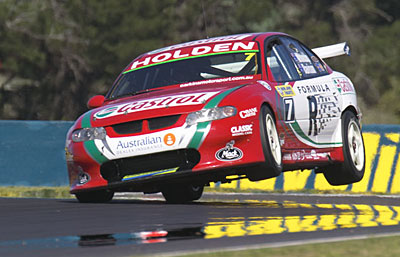Digital Camera Reviews
Tips: Camera, Action!
Capturing sports and human action can be one the most frustrating yet rewarding photographic challenges.

Dominick
Guinn knocks out Michael Grant with a left hook in the seventh round
of their Heavyweight bout at Boardwalk Hall on June 7 in Atlantic City,
New Jersey. Al Bello, Getty Images
Traditionally, the killer with compact digital cameras has been the devastating shutter lag which makes accurate composition and timing a real lucky dip. This can be countered somewhat by selecting the ‘sports/action’ preset on your little camera, but the necessary focussing compromise can make results disappointing.
Serious sports or action photography requires a digital SLR (Single Lens Relex) kit with interchangeable or zoom lenses. Once the exclusive domain of professionals with big budgets, it’s pleasing to see affordable, capable digital SLRs appearing on the market with all the goods aboard. Sure, these units may have trimmed down feature lists and use plastic instead of metal, but they are remarkably versatile and adaptive and the price of entry-level SLRs is neck-and-neck with high end compacts.
Action photography requires all-round camera skills, so don’t go out and buy a camera expecting to be an expert the day after. Hey, don’t laugh, I’ve met them!

Capturing
the moment of peak excitement is what action photography is all about.
Photographer, Ben Dinnerville, captured this shot at
Bathurst.
If you’re into motorsport, a long lens is mandatory, typically 300mm and more, especially if you are relegated to general admission areas a long way from the action. Without the cost of film hanging over your head, you have no excuse not to keep on shooting and reviewing your work as you go. Practice panning, gradually reducing the shutter speed for added effect. See if you can get down to 1/30s or even 1/15s and still keep the subject sharp. Next try ‘frozen’ action using speeds from 1/500 to 1/1000, but don’t use this speed for panning or the vehicle will look ‘parked’. Instead try shooting almost head-on with an approaching vehicle just turning away slightly. You’ll see tyres stressed, cars at odd angles and drivers ‘busy’ behind the wheel. The auto-focus capability of your camera/lens combination will quickly be revealed, and if it has trouble tracking a moving target, try switching to manual focussing. Yeah, back to basics! There’s nothing wrong with practicing in the car park or on a street corner, but hey, always, ALWAYS play it safe. No injury or damage is worth it.
Ball sports, gymnastics, aviation, athletics and even playgrounds all require their own special skills to get that ‘cracker’ shot. This comes in part from a familiarisation with your chosen sport and the rest comes with camera skill – and it ALL comes with practice.